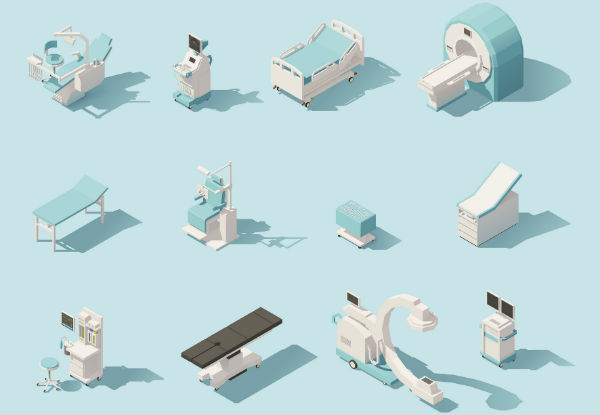Network Connectivity, Storage Challenge Healthcare IoT Push
As organizations adopt the healthcare IoT, significant infrastructure considerations such as network connection and storage need to be addressed.

Source: Thinkstock
- The growth in value of healthcare Internet of Things (IoT) analytics pressures organizations to examine their IT infrastructures and assess how they can support the influx of healthcare IoT data and device connections.
The healthcare industry is one of the most data intensive verticals using IoT devices. Healthcare organizations are looking to the analytic capabilities of IoT devices to save on overall costs.
IoT devices allow organizations to remotely monitor devices and also collect invaluable data that can be applied to current and future patients, providing otherwise impossible insight into certain conditions.
A Gartner report released late last month stated that analytics enables the most visible impact of the IoT because of the reach it has for analytic possibilities.
“The possibilities for analytics are limitless, and ever-growing data sources present more opportunities to innovate through holding novel insights,” Gartner stated. “But currently, data and analytics leaders should narrow their focus to deriving additional value from the ongoing IoT implementations.”
READ MORE: IoT, BYOD Prompt Healthcare Cloud Security Market Growth
“Examples are an increase of the equipment life span, asset optimization, predictive maintenance of devices, anomaly detection in the manufacturing processes or finding new product usage patterns.”
Gartner report authors found that the IoT market has no single preferred way to implement analytics capabilities. The report confirmed that organizations take varying approaches to IoT analytics with no approach taking precedence over another in any vertical.
Organizations also often used a mix of methods to collect, process and sort IoT data.
Gartner advised organizations to familiarize themselves with the full range of IoT infrastructure innovations and best practices, and to also remain aware of opportunities, risks, and new technologies and services.
Network connectivity is one of the biggest infrastructure challenges organizations run into when implementing IoT solutions.
READ MORE: IoT Growth Sparks Healthcare Device Management, Visibility Solutions
Taoglas Co-Founder and Co-CEO Dermot O’Shea told HITInfrastructure.com that medical IoT devices benefit organizations greatly. However, network connectivity can make or break an IoT solution.
“It’s been shown that medical IoT devices save a lot of money because they get people out of the hospital,” O’Shea explained. “If IoT devices can diagnose people in advance then that saves huge costs. We can see nothing but benefits from medical devices being connected. Working with medical device companies brings a much larger delta of savings and benefits than any other vertical.”
Most healthcare organizations use cellular connections over WiFi connections because they are more reliable and don’t have the same lengthy login protocols or physical network restrictions as WiFi.
“Most organizations use cellular because it’s the only reliable way to really communicate with the devices,” O’Shea stated. “If you’re only using WiFi then you’re relying on the user, patient or caregiver to do all the WiFi connectivity in terms of selecting the WiFi network and putting in the password.”
Connected medical devices need to meet certain certifications and a certain level of performance. Each device is tested on how well it sends and receives data. The devices need to be tested on how weak a signal they can give off while still being connected.
Medical IoT devices are often a unique shape and contain other high powered electronics that can interfere with network connectivity.
Ensuring that medical devices are properly equipped with the proper antennas for cellular connectivity is vital for the devices to pass certifications required for healthcare IoT devices.
Organizations need to focus on how they are going to store the IoT data collected for analytics after working through IoT device connectivity.
Healthcare organizations can store collected data on-premises, in the cloud, or a combination of the two. Cloud computing is the preferred method of storage for analytics because many analytic platforms run in a cloud environment.
Cloud storage is also much more affordable at meeting the scale demands of IoT analytics data.
However, healthcare organizations find a certain level of comfort in storing clinical data on-premises. Forward Health Group CTO Jeff Thomas told HITInfrastructure.com that there is a comfort level for organizations in knowing that their data is in their data center.
“They can walk up and touch it, and sometimes it's that emotional comfort factor that has some healthcare organizations leaning toward keeping data in house,” Thomas noted.
On-premises servers offer healthcare organizations more control over their data, but are costly to maintain which is a major reason many organizations are migrating to cloud.
“Cloud solutions are very beneficial from the standpoint that as you migrate data, you don't need to maintain your own datasets which can be costly and expensive,” continued Thomas. “I’m saying costly but maintaining datasets on-site can also be expensive in that it takes up real estate which can sometimes be used for something else.”
Cloud storage also trumps most on-premises solutions by scaling up on-demand rather than having organizations wait for new physical server to arrive and be set up. Organizations only need to pay for the cloud services they are using so they can scale cloud infrastructure down as analytics projects are implemented and completed.
Network connectivity and storage are two of the main infrastructure requirements for a fully supportive IoT analytics deployment. Organizations cannot more forward with IoT analytics incentives without the proper infrastructure solutions and tools to support it.
